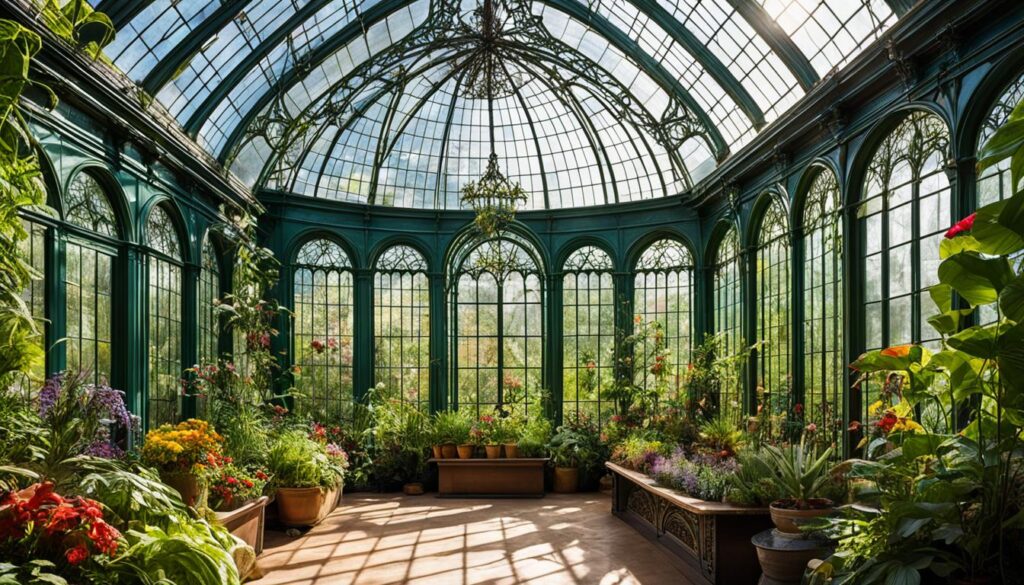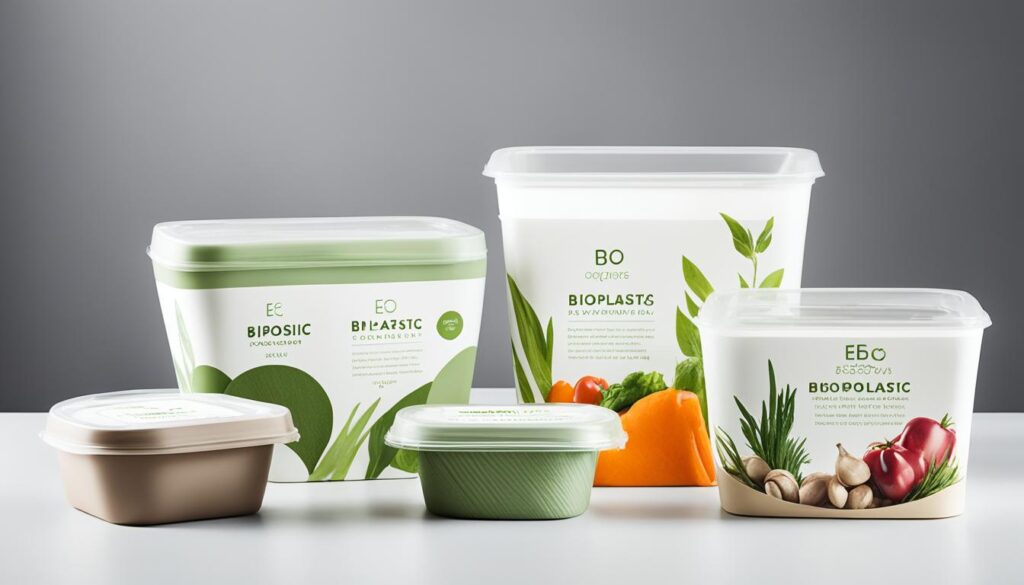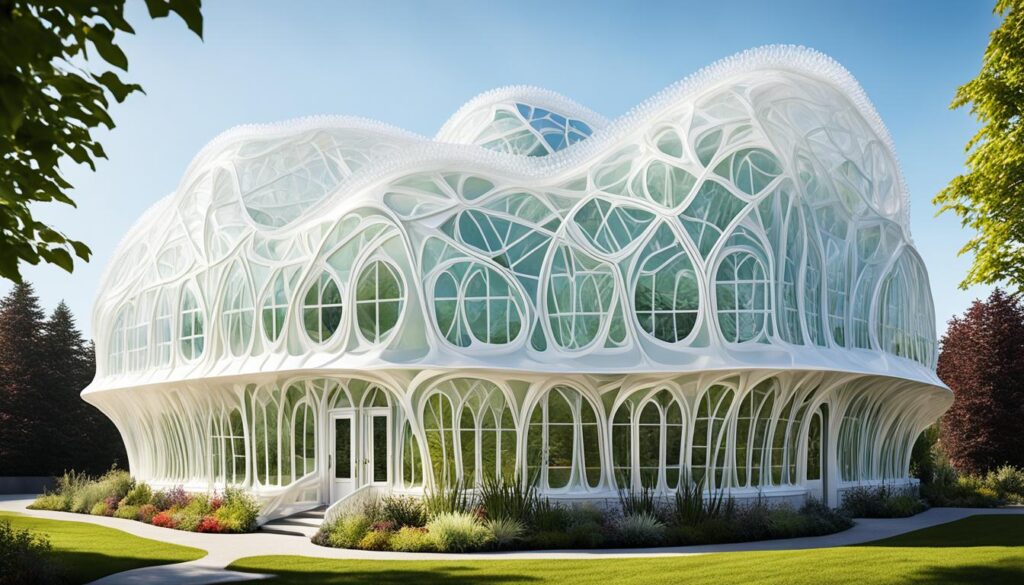Bioplastics are gaining popularity in the field of design and construction in Victoria, Australia. This sustainable material is being embraced by architects and builders as they seek to promote eco-friendly building practices and reduce the environmental impact of the construction industry. With the rise of the circular economy and increasing focus on waste reduction, bioplastics offer a renewable alternative to traditional petroleum-based plastics. In this article, we will explore the use of bioplastics in Victorian design and construction and their potential to revolutionise the building sector in Australia.
Key Takeaways:
- Bioplastics are sustainable materials that are gaining popularity in the design and construction industry in Victoria, Australia.
- They offer a renewable alternative to traditional petroleum-based plastics, reducing the carbon footprint of the construction industry.
- Bioplastics have lower environmental impact and are biodegradable, making them a sustainable choice for construction materials.
- They are used in various applications such as insulation, roofing, furniture, and packaging.
- Despite challenges in production technology and cost, ongoing research and development aim to address these limitations and drive wider adoption of bioplastics.
Advantages of Bioplastics in Construction
Bioplastics offer several advantages when used in construction projects. Firstly, they are made from renewable resources such as plants, which reduces reliance on fossil fuels and decreases the carbon footprint of the building industry. Additionally, bioplastics have a lower environmental impact compared to traditional plastics, as they emit fewer greenhouse gases during production and decomposition.
They are also biodegradable, meaning they can break down naturally without causing harm to the environment. These qualities make bioplastics a sustainable choice for construction materials.
The Benefits of Sustainable Materials
One of the main advantages of using bioplastics in construction is the utilization of sustainable materials. By sourcing bioplastics from renewable resources like plants, the construction industry can reduce its dependence on finite fossil fuel reserves. This not only helps conserve valuable resources but also mitigates the environmental impact associated with traditional plastic production.
Furthermore, the use of sustainable materials aligns with the principles of the circular economy, promoting a more sustainable and efficient approach to resource management. By prioritizing the use of renewable resources, the construction industry can contribute to a greener and more environmentally conscious future.
Reducing Environmental Impact
Another key advantage of bioplastics in construction is their reduced environmental impact. Traditional plastics are derived from petroleum, a fossil fuel that releases significant amounts of greenhouse gases during extraction and refining processes. In contrast, bioplastics emit fewer greenhouse gases during production, as they are made from organic materials. This helps mitigate climate change and reduces the carbon footprint of the construction industry.
Moreover, bioplastics are biodegradable, meaning they can naturally decompose over time. Unlike traditional plastics, which linger in the environment for hundreds of years, bioplastics break down into harmless components through natural processes. This reduces the accumulation of plastic waste and its associated detrimental effects on ecosystems, wildlife, and human health.
Advancing Renewable Resources
By incorporating bioplastics into construction projects, the industry can promote the use of renewable resources. Bioplastics are typically made from plant-based materials such as cornstarch or sugarcane, which are abundantly available and can be sustainably harvested. This reduces the strain on finite resources and offers a viable alternative to petroleum-based plastics.
The use of renewable resources in construction aligns with the principles of sustainability and contributes to the preservation of natural ecosystems. It also supports local farmers and agricultural communities, creating economic opportunities and fostering a more resilient and self-sufficient construction industry.
Overall, the advantages of bioplastics in construction are significant. From utilizing sustainable materials and reducing environmental impact to advancing the use of renewable resources, bioplastics offer a promising solution for creating a more sustainable and eco-friendly construction industry.
Applications of Bioplastics in Victorian Design
In Victorian design, bioplastics are being seamlessly integrated into various aspects, bringing forth a new era of sustainable construction practices and waste reduction. These versatile materials can be utilized in the production of essential building components including insulation, roofing, and wall panels, offering an eco-friendly alternative to traditional materials.
Moreover, bioplastics are making their mark on interior design elements, enhancing the aesthetic appeal and environmental consciousness of Victorian homes and buildings. From furniture to flooring and lighting fixtures, bioplastics are revolutionizing the concept of sustainable design by infusing it with elegance and functionality.
By embracing bioplastics in their design projects, architects and designers are playing a crucial role in promoting a more sustainable and environmentally conscious construction industry. The integration of bioplastics in Victorian design not only contributes to green construction practices but also serves as a testament to the innovative and forward-thinking nature of the industry.
| Application | Benefits of Bioplastics |
|---|---|
| Building materials (insulation, roofing, wall panels) | • Sustainability • Reduced environmental impact • Renewable resources • Lower carbon footprint |
| Interior design elements (furniture, flooring, lighting fixtures) | • Enhanced aesthetic appeal • Eco-friendliness • Reduced waste • Contribution to sustainable design |
Image:

Challenges in Implementing Bioplastics in Construction
While bioplastics offer many benefits, there are also challenges in implementing them in the construction industry. One challenge is the technical issues surrounding the development of bioplastics with the required characteristics of resilience, biodegradability, and strength. Identifying the most suitable algae or plant sources for bioplastics and designing polymers that meet the necessary criteria can be a complex process.
Additionally, the production technology for bioplastics is still not market ready, which poses challenges in terms of cost and scalability. The current production methods are not as efficient and cost-effective compared to traditional petroleum-based plastics. However, advancements in research and development are being made to improve the manufacturing process and reduce costs.
Furthermore, the circular economy model, which emphasizes the reuse, recycling, and regeneration of materials, poses specific challenges for bioplastics in construction. Currently, there is limited infrastructure and systems in place to support the collection, recycling, and disposal of bioplastics at scale. Developing a comprehensive circular economy framework that incorporates bioplastics requires collaboration from various stakeholders, including policymakers, waste management organizations, and the construction industry.
“The development and implementation of bioplastics in construction require a multidisciplinary approach. It demands collaboration between scientists, engineers, manufacturers, and policymakers to overcome technical and cost challenges and establish a sustainable circular economy for bioplastics in the construction sector,” explains Dr. Rebecca Green, a leading researcher in sustainable materials.
However, as advancements are made in research and development, these challenges are expected to be addressed. Ongoing studies and collaborations between researchers, manufacturers, and policymakers aim to improve the technical properties of bioplastics and develop more cost-effective production methods. With continued efforts, the potential of bioplastics to become a viable and sustainable option for construction materials is promising.
Comparative Analysis of Bioplastics and Traditional Plastics
| Attributes | Bioplastics | Traditional Plastics |
|---|---|---|
| Renewability | Biomass-based, derived from renewable resources (plants, algae) | Petroleum-based, derived from fossil fuels |
| Environmental Impact | Lower carbon footprint, less greenhouse gas emissions | Higher carbon footprint, significant greenhouse gas emissions |
| Biodegradability | Capable of natural decomposition without causing harm to the environment | Slow decomposition, contributes to pollution and landfill waste |
| Technical Properties | Development challenges, ongoing research to improve characteristics | Well-established properties, diverse range of applications |
| Cost | Production technology challenges, cost reduction efforts underway | Established production processes, cost-efficient |
Research and Development in Algal Bioplastics
At the Institute for Sustainable Futures and the Climate Change Cluster, our research team is dedicated to investigating the potential of algal bioplastics and their sustainability benefits in Australia. Led by Fiona Berry, Monique Retamal, Unnikrishnan Kuzhiumparambil, and Peter Ralph, our aim is to develop flexible bioplastics derived from algae as a viable alternative to petroleum-based plastics in various applications. Our comprehensive research includes market analysis, sustainability considerations in product design, policy context, and recommendations for product developers. By focusing on algal bioplastics, we strive to pave the way for a more sustainable future in the construction industry.
Innovative Bioplastics Research in the US
In the US, researchers are also focusing on innovative bioplastic packaging materials to address the challenges of landfill capacity and environmental impact. Institutions such as Missouri University Science and Technology are experimenting with super-biodegradable plastics made from fillers like starch and fibers. These bio-based plastics decompose in a few months, offering a more sustainable alternative to oil-based plastics that take several hundred years to break down. Other research efforts are focused on improving the strength and mechanical properties of bioplastics using nanotechnology techniques and reinforcement methods. These innovations in bioplastics research are shaping the future of sustainable packaging solutions.

| Advancements in Bioplastics Research | Applications | Benefits |
|---|---|---|
| Super-biodegradable plastics made from starch and fibers | Packaging materials | Reduced environmental impact |
| Nanotechnology techniques and reinforcement methods | Containers and wraps | Improved strength and performance |
| Food and beverage packaging | Sustainable alternative to oil-based plastics | |
| Cosmetic packaging | Biodegradable and compostable |
Plantic Technologies: Leading the Way in Bioplastic Packaging
In the realm of bioplastic packaging, one company stands out for its commitment to sustainability and innovative solutions. Plantic Technologies, headquartered in Melbourne, Australia, has solidified its position as a leading producer of bioplastic packaging products. With their state-of-the-art manufacturing facilities in Altona, Plantic Technologies is at the forefront of the bioplastics industry.
At Plantic Technologies, their focus is on producing biodegradable plastic materials made from non-genetically modified corn starch. This renewable content ensures that their products contribute to a greener, more environmentally friendly world. By using sustainable resources, Plantic Technologies reduces reliance on traditional petroleum-based plastics and promotes a circular economy.
Recognized by major retailers and food producers, Plantic materials are widely used for packaging fresh food items. Their bioplastic packaging offers numerous advantages, including being 100% home compostable and fully biodegradable. This means that their packaging provides cost and environmental benefits, aligning with the growing demand for sustainable packaging solutions.
What sets Plantic Technologies apart is their proprietary process technology. This organic and renewable manufacturing method positions them as an industry leader committed to reducing the environmental impact of packaging materials. Their dedication to sustainable practices is further reinforced by collaborations and certifications from reputable organizations.
To provide a visual representation of Plantic Technologies’ achievements, I have prepared a table showcasing their certifications and partnerships:
| Certifications and Partnerships |
|---|
| 1. Association X Certification |
| 2. Organization Y Collaboration |
| 3. Retailer Z Partnership |
Quote:
“At Plantic Technologies, we are committed to revolutionizing the packaging industry with our bioplastic materials. By prioritizing renewable content and adopting innovative manufacturing processes, we are paving the way towards a more sustainable future.”
In conclusion, Plantic Technologies is leading the way in bioplastic packaging, offering a range of sustainable and renewable materials. Their dedication to reducing the environmental impact of packaging materials is evident in their organic manufacturing process and their collaborations with reputable organizations. As the demand for sustainable packaging solutions continues to rise, Plantic Technologies remains at the forefront of the bioplastics industry, providing innovative and environmentally friendly alternatives.
Plantic’s Production Process and Applications
We are proud to share the details of Plantic’s production process and the wide range of applications for their innovative bioplastic materials. The Altona plant, located in Melbourne, Australia, has recently undergone expansion and upgrades to enhance production capacity and efficiency.
The proprietary process technology used by Plantic involves the utilization of high-amylose corn starch as the primary raw material. This starch undergoes specific modifications to achieve the desired properties of the bioplastic, resulting in a versatile and sustainable material.
At the Altona plant, extruded sheets and resin granules are produced, which can be distributed to packaging companies worldwide. These bioplastic materials can be utilized in various applications, including rigid and flexible packaging, thermoforming, blow molding, film extrusion, and injection molding.
Plantic’s commitment to sustainability is reflected in their environmentally friendly production process. By utilizing renewable resources and integrating cutting-edge technology, Plantic offers a responsible and sustainable choice for packaging materials.
Applications of Plantic Materials:
- Rigid and flexible packaging
- Thermoforming
- Blow molding
- Film extrusion
- Injection molding
Plantic’s bioplastic materials are suitable for a wide range of packaging applications, ensuring both functionality and sustainability. Their unique properties enable the creation of robust and visually appealing packaging solutions that align with the demands of modern industries.
With Plantic’s Altona plant at the forefront of bioplastics production, their commitment to quality, innovation, and environmental stewardship is evident. Their versatile and sustainable materials offer a greener and more responsible choice for packaging needs, contributing to a more sustainable future for the industries they serve.
Potential Future Developments in Bioplastics
The bioplastics industry is continually evolving, offering potential future developments in the field. As legislation regarding landfill prices and plastic waste management becomes more stringent, market opportunities for bioplastics are expected to grow. Advancements in research and technology can address the current challenges in bioplastic production, such as cost and scalability. With the rising cost of oil and the increasing demand for sustainable alternatives, the commercial outlook for bioplastics is promising. Continued research partnerships, innovation in formulations, and improvements in mechanical properties can further propel the adoption of bioplastics in various industries, including construction.
Market Opportunities
In the coming years, the bioplastics industry is poised to capitalize on market opportunities driven by changing consumer preferences and environmental regulations. As consumers become more conscious of their impact on the environment, there is a growing demand for sustainable products. Bioplastics, with their renewable and biodegradable properties, offer a viable solution to meet this demand. Additionally, as governments implement stricter legislation and impose higher landfill prices, industries will increasingly turn to bioplastics as a more environmentally friendly alternative.
Legislative Changes
The legislative landscape is evolving to prioritize sustainability and reduce the reliance on traditional plastics. Various countries and regions have implemented or are considering legislation to ban single-use plastics or introduce extended producer responsibility schemes. These changes create a favorable environment for the adoption of bioplastics and present an opportunity for companies to offer sustainable alternatives. As legislative frameworks continue to evolve, the demand for bioplastics is expected to increase, driving further research and development in the field.
Research Advancements
Ongoing research and technological advancements are key drivers in shaping the future of bioplastics. Scientists and engineers are continually developing new formulations and processes to enhance the performance and properties of bioplastics. This includes improving their mechanical strength, durability, and flexibility, making them more suitable for a wider range of applications. Additionally, research efforts are focused on finding innovative feedstock sources that are more sustainable and do not compete with food production. As research advancements continue to progress, bioplastics will become more cost-effective and scalable, accelerating their adoption in industries such as construction.
Conclusion
In conclusion, bioplastics are playing a significant role in promoting sustainable design and construction practices in Victoria, Australia. With their renewable nature, reduced carbon footprint, and biodegradability, bioplastics offer an eco-friendly alternative to traditional plastics.
While there are challenges in implementing bioplastics at scale, ongoing research and technological advancements are paving the way for wider adoption. Companies like Plantic Technologies are leading the way in producing bioplastic materials that are suitable for various applications, including packaging.
As the construction industry embraces sustainable practices and circular economy principles, bioplastics are poised to revolutionize the sector and contribute to a greener and more environmentally conscious future.
FAQ
What are the advantages of using bioplastics in construction?
Bioplastics offer several advantages in construction, including being made from renewable resources, reducing the carbon footprint, having a lower environmental impact, and being biodegradable.
Where can bioplastics be applied in Victorian design?
Bioplastics can be used in various aspects of Victorian design, including insulation, roofing, wall panels, furniture, flooring, and lighting fixtures.
What challenges are there in implementing bioplastics in construction?
Challenges in implementing bioplastics include technical issues in developing bioplastics with the required characteristics, along with cost and scalability challenges.
What research is being conducted on algal bioplastics in Australia?
The Institute for Sustainable Futures and the Climate Change Cluster at the University of Technology Sydney are conducting research on algal bioplastics and their sustainability potential in Australia.
What innovative bioplastic research is happening in the US?
In the US, researchers are focusing on developing super-biodegradable plastics made from fillers like starch and fibers, as well as improving the strength and properties of bioplastics using nanotechnology techniques and reinforcement methods.
Who is leading the way in bioplastic packaging?
Plantic Technologies, based in Melbourne, Australia, is a leading producer of bioplastic packaging products, offering sustainable and environmentally friendly materials made from non-genetically modified corn starch.
What is Plantic’s production process and its applications?
Plantic’s production process involves using high-amylose corn starch to create bioplastic materials, which can be used in various applications such as packaging, thermoforming, blow molding, film extrusion, and injection molding.
What are the potential future developments in bioplastics?
As legislation regarding landfill prices and plastic waste management becomes more stringent, market opportunities for bioplastics are expected to grow, along with advancements in research and technology.
What is the conclusion regarding bioplastics in sustainable design and construction?
Bioplastics are playing a significant role in promoting sustainable design and construction practices in Victoria, offering renewable and eco-friendly alternatives to traditional plastics.
